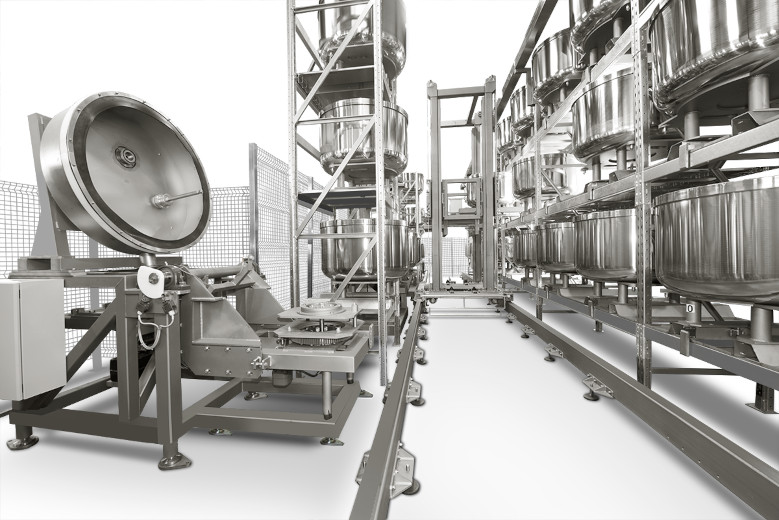
How to scale up artisan bread production
Better-for-you preferences also apply to bread. Several mixing options help increase production volumes while providing goods that still feel and taste artisan-made.
Better-for-you preferences also apply to bread. Several mixing options help increase production volumes while providing goods that still feel and taste artisan-made.
Making its debut on the best stage for a first impression, at iba, the new, compact IMPRESSA bread line developed by FRITSCH for industrial production manages to save 20% of the floor space – about 5 m. This was accomplished, in part, by new sheeting technology incorporated in the revised Soft Dough Sheeter (SDS) and the new Soft Dough Roller (SDR).
Bread-making is a scientific symphony of physical, chemical, and rheological processes. Beyond the apparent simplicity of mixing flour, water, and yeast lies an intricate web of molecular and mechanical changes that transform these raw materials into bread.
It is a recurrent issue well-known in food processing companies: sometimes, a product that has been successfully manufactured over a long period of time suddenly exhibits a quality problem, although nothing has been intentionally changed.
An internationally recognized method exists to characterize the water absorption capacity with ease and efficiency.
ECD will bring its thermal profiling technology to iba in October. The handheld M.O.L.E.™ EV6 sets a new benchmark for thermal data loggers, delivering instantaneous data access and intuitive control – now with a full-color touchscreen display. In addition to the six-channel M.O.L.E. EV6, the company’s BreadOMETER™, CakeOMETER™, and OvenBALANCER™ sensors will be demonstrated at the stand.
Brabender further developed its Farinograph to determine the water absorption capacity of flour and the rheological properties of dough, launching a new version of the device on the market that uses Artificial Intelligence to predict measurement curves.
KPM Analytics showcases solutions that meet growing trends such as automated product inspection, process control achieved with vision inspection, processing whole wheat/high-fiber products, at-line dough quality analysis, and ingredient quality control.
Better-for-you preferences also apply to bread. Several mixing options help increase production volumes while still providing goods that still feel and taste artisan-made. The demand for healthier options in baked goods continues to rise, and the COVID-19 pandemic has only intensified this trend.
In the spring of 2023, Ölz der Meisterbäcker put its expanded production into operation. When it came to raw material handling, the Austrian plant baker relied on Zeppelin Systems for solutions.
VMI will feature a comprehensive range of equipment at its iba booth, catering to small and large-scale production, including automated mixing systems.
DIOSNA will present smart, future-oriented solutions for the food industry in the areas of automation, dough processing and mixing.

